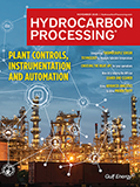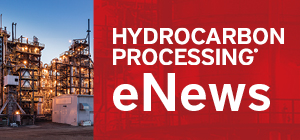Carbon Management
U.S. Supreme Court lets fuel producers challenge California emissions standards
The U.S. Supreme Court sided on Friday with fuel producers that had opposed California's standards for vehicle emissions and electric cars under a federal air pollution law, agreeing that their legal challenge to the mandates should not have been dismissed.
Peróxidos do Brasil reinforces leadership in South America with new strategic investment in Chile
Peróxidos do Brasil, a joint venture between Solvay and Produtos Químicos Makay (PQM), has announced a new strategic investment in its production unit in Chile, reaffirming its commitment to excellence in supply for customers across various markets in South America.
px Group signs LOIs for major SAF and green hydrogen/ammonia projects in Europe
In recent months, px group has signed five Letters of Intent (LOIs) to support major renewable energy infrastructure projects across Norway, Denmark, and Finland, including four green hydrogen/ammonia initiatives and one sustainable aviation fuel (SAF) plant.
How TotalEnergies is utilizing hydrogen to decarbonize its refineries in Europe
TotalEnergies is decarbonizing its sites (Scope 1 and 2) in an ambition to supply more energy while reducing greenhouse gas (GHG) emissions. One of the levers identified by the company is the use of low-carbon hydrogen to decarbonize its European refineries, which would reduce their direct carbon dioxide (CO2) emissions by up to 3 MMtpy by 2030.
Alder Process Technology uses APS to produce low-carbon marine fuels
Alder Process Technology has provided recent progress on its efforts to accelerate decarbonization of the marine fuel sector using Alder Pyrolytic Sugars (APS). APS is created using our proprietary biocrude oil fractionation technology, which converts fast pyrolysis oil derived from sustainably sourced biomass into two products: the pyrolytic sugar fraction, resulting in APS, and the pyrolytic lignin fraction, resulting in Alder Renewable Crude (ARC).
Asia-Pacific on course to become world’s largest CO2 shipping market
Vast distances between emitters and storage sites in Asia-Pacific (APAC) means the region is in line to become the world’s largest carbon dioxide (CO2) shipping market, according to a new CCUS report from global energy consultancy Xodus.
Australia: Roadmap launched for driving maritime decarbonization in the Pilbara
The Pilbara Ports ‘Clean Fuel Bunkering Hub’ outlines a strategic roadmap to establish a clean fuel bunkering hub in the region, enabling the use of alternative marine fuels such as ammonia.
U.S. set to object to green jet fuel recommendation at UN aviation council
The U.S. is expected to object this month to a recommendation at the UN aviation agency council that Washington says unfairly favors Brazilian corn farmers at the expense of U.S. producers in development of green jet fuel.
Carbon capture tops agenda at GPAE Conference 2025
Gas Processors Association Europe brings together leading specialists at annual event in Netherlands to analyze the challenges and opportunities presented by technology at heart of Europe’s decarbonization strategy
UPM Biochemicals receives triple sustainability certification for the Leuna biorefinery
UPM Biochemicals announced that its new biorefinery in Leuna, Germany, has achieved ISCC PLUS, PEFC, and FSC™ chain-of-custody certifications.

- ITT to acquire SPX Flow for > $4.77 B, expanding leadership in highly engineered components and adjacent flow technologies 12/5
- MOL Group introduces eco-friendly Bag-in-Box packaging for lubricants 12/5
- Addis Energy secures $8.3 MM to scale its transformative approach to low-cost ammonia production 12/5
- World Fuel Services supplies cruise line with waste-based biofuels 12/5
- Chevron announced $18 B-$19-B CAPEX budget for 2026 12/5
- Russia and India sign deal to build urea plant in Russia 12/5




